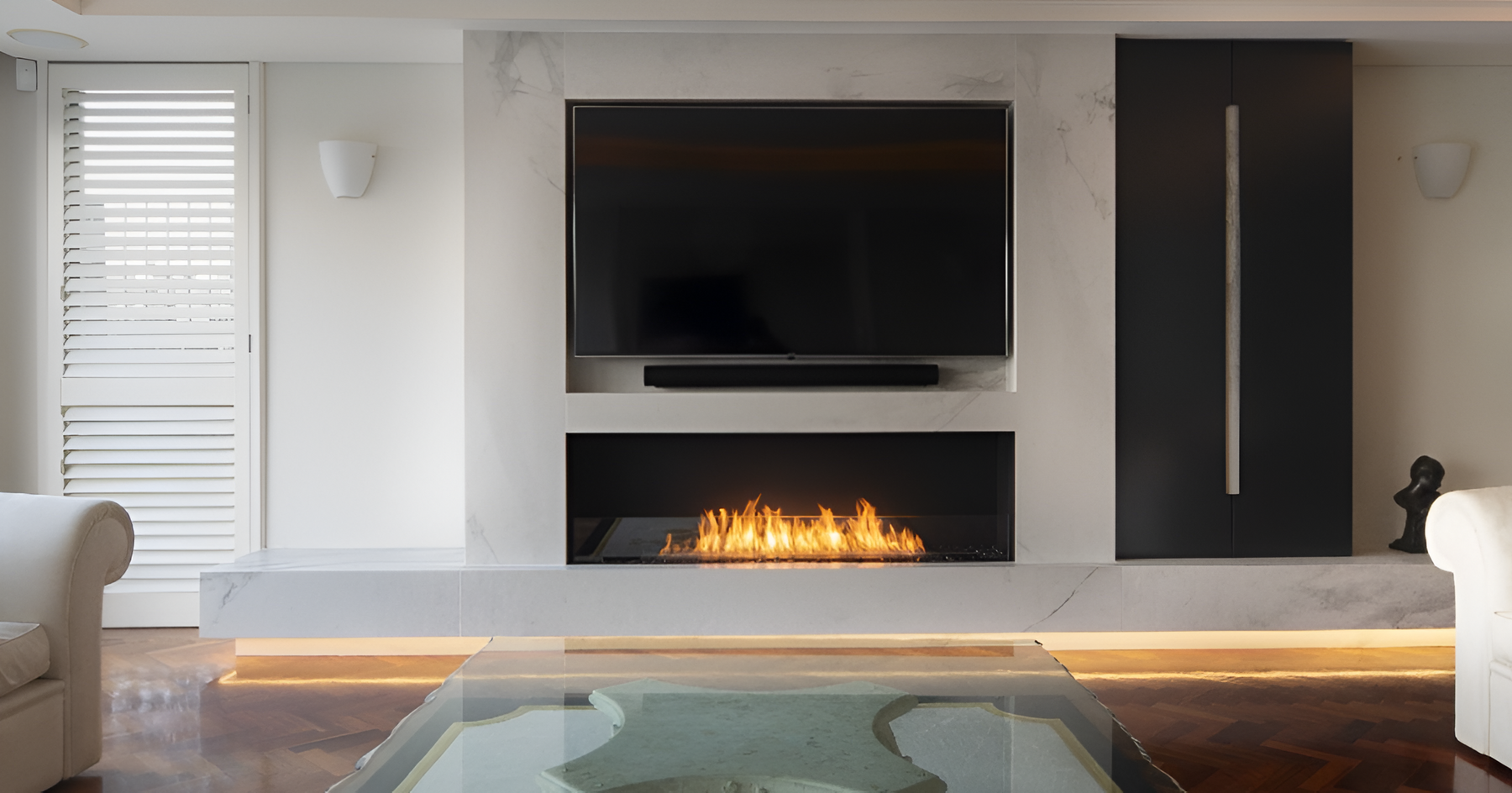
Bioethanol Fires: Is Ventilation Required?
In recent years, bioethanol fires have gained popularity as an eco-friendly alternative to traditional fireplaces. These fires utilise bioethanol fuel, a renewable and clean-burning source of energy. However, when it comes to using bioethanol fires indoors, the question arises: do they need ventilation?
In this article, we will explore the topic of bioethanol fires and whether or not they require ventilation. We will also provide some important safety tips for using these eco-friendly fireplaces in your home.
Key Takeaways:
- Bioethanol fires need ventilation for safe use indoors.
- Proper ventilation ensures the well-being of your household.
- Adhere to the manufacturer's ventilation requirements.
- Follow safety guidelines for handling bioethanol fuel.
- Maintain a safe distance and ensure adequate ventilation.

Understanding Bioethanol Fireplace Ventilation Requirements
In this section, we will delve into the ventilation requirements for indoor bioethanol fireplaces. Proper ventilation is crucial for the safe operation of these eco-friendly fireplaces, as it helps to prevent the buildup of harmful gases and ensures a healthy indoor environment for you and your loved ones.
When using a bioethanol fireplace indoors, it is important to have adequate airflow to dissipate any combustion byproducts such as carbon monoxide and fumes. Without proper ventilation, these gases can accumulate and pose a risk to your health and safety.
To effectively ventilate your bioethanol fireplace, consider the following guidelines:
- Ensure the room where the fireplace is installed has sufficient fresh air supply. This can be achieved by opening windows or installing vents.
- Position the fireplace in an area with good airflow, avoiding enclosed spaces or corners.
- Avoid using the bioethanol fireplace in rooms with poor ventilation, such as bathrooms or bedrooms.
- Regularly maintain and clean the fireplace to ensure proper fuel combustion and minimise the production of unwanted gases.
By following these ventilation requirements and guidelines, you can enjoy the warmth and beauty of a bioethanol fireplace without compromising on safety. Remember, always prioritise the well-being of your household by ensuring adequate indoor bioethanol fire ventilation.

Safety Tips for Using Bioethanol Fires
In this section, we will provide you with essential safety tips for using bioethanol fires. By following these guidelines, you can enjoy the warmth and ambiance of a bioethanol fireplace without compromising on safety.
1. Proper Handling of Bioethanol Fuel
When using bioethanol fires, it is important to handle the fuel with care. Follow these tips:
- Always read and follow the manufacturer's instructions for refueling.
- Use a funnel to prevent spills and avoid direct contact with the fuel.
- Store bioethanol fuel in a cool, dry place away from sources of ignition.
2. Maintaining a Safe Distance
Keep the following distance guidelines in mind when using a bioethanol fireplace:
- Keep flammable materials, such as curtains or furniture, at least 1 meter (3 feet) away from the fireplace.
- Avoid placing the fireplace in areas with high foot traffic to prevent accidental contact.
- Ensure that children and pets are supervised and kept at a safe distance from the fire.
3. Ensuring Adequate Ventilation
Proper ventilation is crucial to ensure the safe operation of a bioethanol fireplace. Here are some guidelines:
- Always use bioethanol fireplaces in well-ventilated areas.
- Open windows or doors to allow fresh air circulation while the fireplace is in use.
- Consider installing carbon monoxide detectors in your home for added protection.
By following these safety tips, you can enjoy the cosy warmth of a bioethanol fireplace with peace of mind. Remember to prioritise safety and make responsible choices when using these eco-friendly fireplaces.

Conclusion
In conclusion, bioethanol fires require proper ventilation for safe use indoors. It is crucial to understand and adhere to the ventilation requirements outlined by the manufacturer to prevent any potential hazards. By following the recommended safety guidelines and ensuring adequate ventilation, you can enjoy the many benefits of a bioethanol fireplace while keeping your home and loved ones safe.
When using bioethanol fires, it is important to stay informed and make responsible choices. Ensure that you carefully read and understand the manufacturer's instructions regarding ventilation and follow them diligently. This will help you maximise the efficiency and safety of your bioethanol fireplace.
Remember to handle bioethanol fuel with caution. Take appropriate measures to maintain a safe distance between the flames and any flammable materials. Additionally, regularly inspect and maintain your fireplace to ensure it is in good working condition. This includes cleaning and checking for any potential leaks or malfunctions.
By investing in a quality bioethanol fireplace and prioritising proper ventilation and safety, you can create a warm and inviting atmosphere in your home without compromising the well-being of your household. Stay informed, take necessary precautions, and enjoy the eco-friendly and aesthetically pleasing benefits of bioethanol fires.
Other content you'll love:
Understanding Bioethanol Fireplaces Functionality
Safety of Indoor Bioethanol Fires Explained
Is a Flue Necessary for Bioethanol Fires?
Do Bioethanol Fires Produce CO2? Get Facts Here
Bioethanol Safety Guide: Is Bioethanol Flammable?
Bioethanol Fires Warmth – Get Cosy & Efficient Heat
Bioethanol Fires Safety Guide: Are They Dangerous?
Bioethanol Fires Running Costs Explained
Bioethanol Fires: Do They Produce Heat?
Bioethanol Fires & Carbon Monoxide Risks Explained
Bioethanol Fires: Are They Electricity-Free?
Bioethanol Fireplace vs Gas: Eco-Friendly Choice?
Bioethanol Fireplace Explained: Eco-Friendly Warmth
Bioethanol Fire vs Log Burner: Best Choice for You


